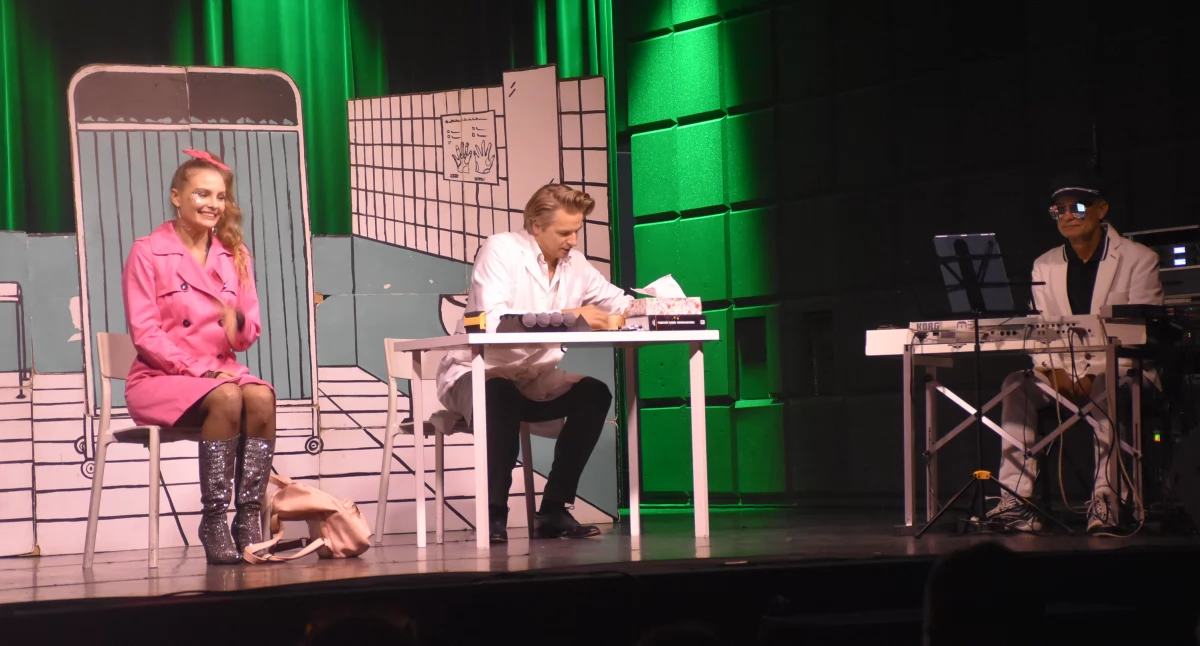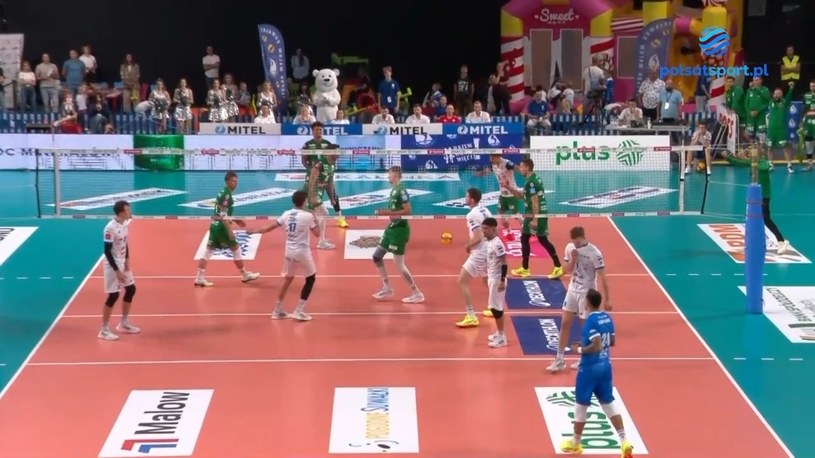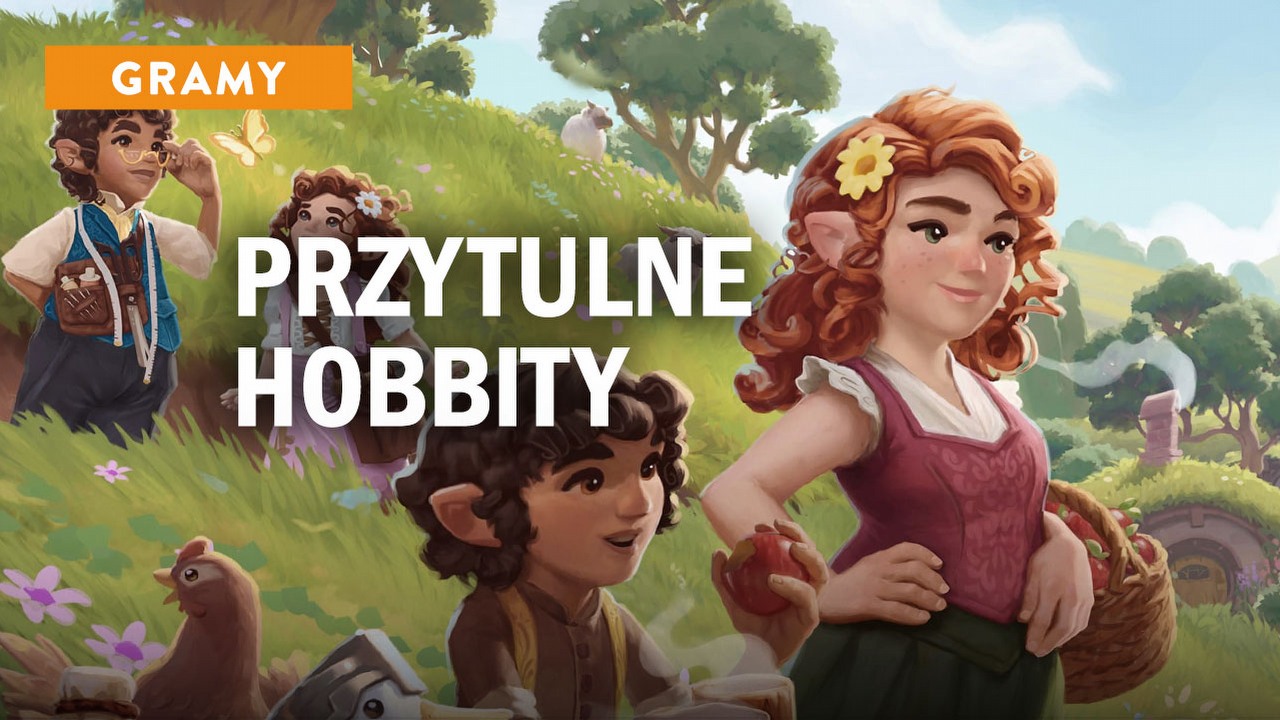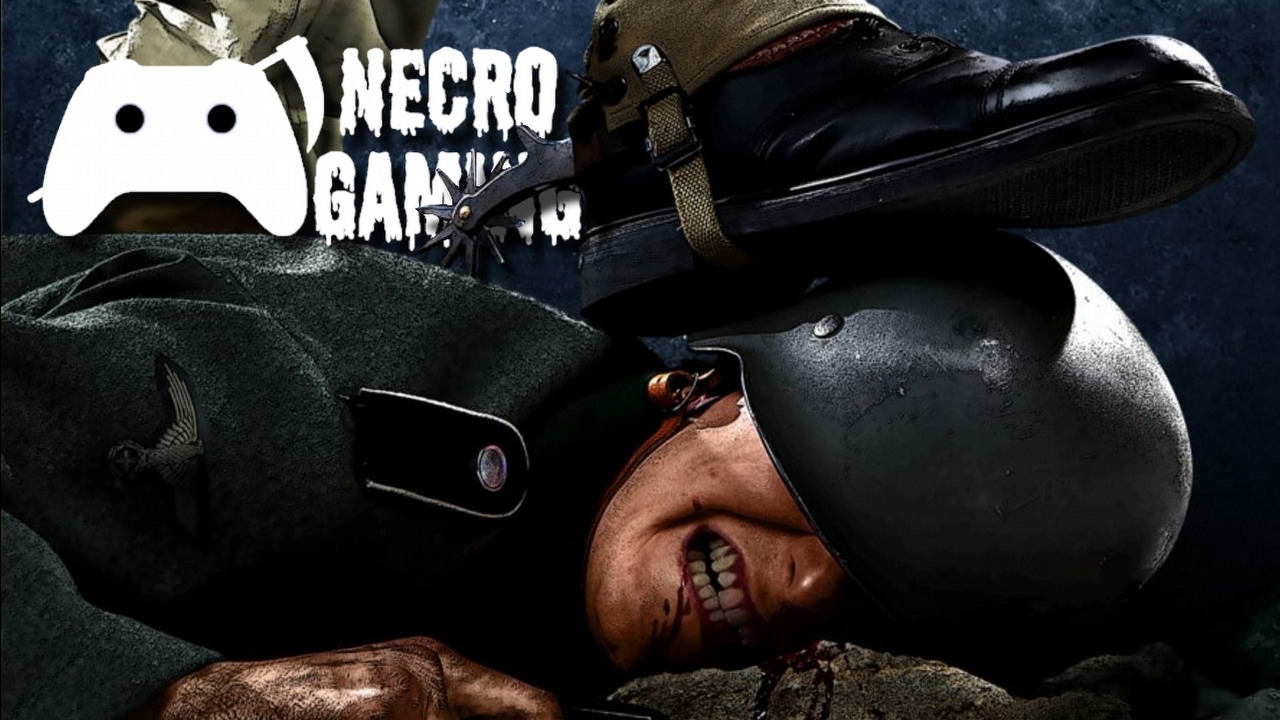The director’s cut is 1 of the alien and more complicated divots in the scenery of film. As anyone in Hollywood will tell you, getting to direct your own movie is already very nearly a miracle, but it’s even rarer that a manager is granted final cut on the films they make. And in most of those cases, good or bad, whatever version of a movie the studio wants to release is the 1 that is cemented in history.
However, in a fewer very uncommon cases, a manager gets the chance to return to 1 of their movies and alter it as they see fit, pushing aside studio notes and cutting together precisely the version they desire. This doesn’t always consequence in saving a masterpiece, or even improving a movie, but any fortunate directors have taken the chance to save their own movie and reshape its cultural image.
While this may sound like a triumph of art over the cold arm of commerce, it’s crucial to remember that a director’s cut is, first and foremost, inactive a tool of marketing. In the best case scenarios, it’s a genuine improvement on a part of art thanks to the imagination of the director. But it can besides be a substantially worse movie in any cases, or have barely any change at all. But no substance the result, a director’s cut is an effort to get more people to watch a movie, even if it’s a good-faith effort to realize the first director’s vision, whether in theaters or years later on home release.
Image: fresh Line Cinema
Similarly, there’s a real difference between a director’s cut of a movie and an extended cut or unrated version. Plenty of R-rated comedies in the 2000s were given unrated DVD releases that weren’t necessarily more truthful realizations of the director’s vision, but alternatively just included a fewer more vulgar jokes that likely got cut for good reason. Even more importantly, examples like the extended versions of Peter Jackson’s Lord of the Rings movies don’t fit the bill of “director’s cuts” due to the fact that the definitive versions of those movies are the theatrical releases. The Extended Editions be to let fans see more of the world, not to more clearly execute Jackson’s version of the story.
With all that in mind, here are 9 large director’s cuts that are crucial to knowing the past of directors getting the chance to revisit their films.
:no_upscale()/cdn.vox-cdn.com/uploads/chorus_asset/file/22796913/32e91637481e9cb530d1f3862d14a331.jpeg?resize=696%2C522&ssl=1)
Image: The Criterion Collection
Among the first major director’s cuts always released to the viewing public was Charlie Chaplin’s Gold Rush. Originally released in 1925 as a silent movie, Chaplin re-released the movie in 1942 with a fresh musical score, narration he performed himself, and much tighter editing, which reduced the movie’s runtime significantly. The control of this movie from a silent movie to a talkie makes it not just 1 of the first known director’s cuts, but besides 1 that saw any of the biggest changes from its first release. While there’s disagreement over which version of the movie is best, Chaplin and his contemporary theater-goers seemed to agree that the talkie version was definitive, letting the silent cut fall entirely out of circulation until it was restored and released on the movie’s Criterion Collection DVD.
While Chaplin’s effort at re-releasing a fresh version of his movie took place in the 40s, the director’s cut trend didn’t truly choice up steam until the 70s, but again, the trend was frequently hard to separate from pure marketing to get viewers back into theaters. For instance, Chaplin himself re-released many re-cut versions of his movies in the 70s, but that was more to advertise them alternatively than to fundamentally change them, as it had been with Gold Rush.
:no_upscale()/cdn.vox-cdn.com/uploads/chorus_asset/file/24956526/apocalypse_now_martin_sheen_01.jpg?resize=696%2C296&ssl=1)
Image: Lionsgate Home Entertainment
The 70s were full of directors tinkering with their movies. George Lucas recut bits and pieces of his early films American Graffiti and THX 1138 erstwhile they were re-released after Star Wars’ massive success. 5 years after its first release in 1969, Sam Peckinpah added back in any of the more utmost content to The chaotic Bunch that was originally cut to get it an R rating. The infamous Caligula, first released in 1979 amidst legal issues and protests and later released with a toned-down R-Rated version in 1981, had a more explicit Ultimate Cut that didn’t get a complete release until April 2024.
However, possibly the biggest and most interesting example from the era is Francis Ford Coppola’s Apocalypse Now, which featured a director’s cut that didn’t get released until 2001.
In Apocalypse Now Redux, Coppola added over 40 minutes, including a lengthy section where the soldiers visit a French plantation, a holdover from the time erstwhile Vietnam was known as French Indochina.
:no_upscale()/cdn.vox-cdn.com/uploads/chorus_asset/file/25545674/MCDAPNO_EC029.jpg?resize=696%2C290&ssl=1)
Image: Paramount Pictures via Everett Collection
This section of the movie is absolutely fascinating, and enriches Coppola’s general thesis about the dangers of colonialism. But it besides makes for a substantially worse movie. It’s longer, slower, and takes distant from the primary narrative’s hunt for Colonel Kurtz in a way that muddles both his character arc and that of protagonist Captain Willard. Coppola returned to the movie again in 2019 for its 40th anniversary re-release with Apocalypse Now Final Cut. This version includes bits and pieces of the plantation sequence, while cutting about 20 minutes from the Redux. It’s inactive not rather as smooth as the first version, but it’s vastly superior to Redux, with much better pacing and less unusual tangents.
This, like Gold Rush, marks a vastly different kind of director’s cut from any of the others on this list. It wasn’t created due to the fact that the first version was incomplete, bad, or overly warped by studio pressure; it exists due to the fact that Coppola wasn’t rather content with the masterpiece he made and wanted to tinker with it just a bit. And despite being released nearly 3 decades later, just like any of the another director’s cuts of the 70s, it provided a large reason for Coppola to put Apocalypse Now back in theaters.
:no_upscale()/cdn.vox-cdn.com/uploads/chorus_asset/file/25545629/MCDHEGA_EC009.jpg?resize=696%2C511&ssl=1)
Image: United Artists via Everett Collection
Originally released in 1980, Heaven’s Gate tells the communicative of a land dispute in agrarian Wyoming in the 1890s. The movie is simply a sweeping dramatic epic, and among the most ambitious late-period westerns always attempted. It was besides considered a massive boondoggle and a somewhat notorious failure.
Director Michael Cimino originally assembled a massive 325-minute version of the movie to screen for studio executives, then a 219-minute version for the movie’s authoritative premiere. However, these versions were later virtually chopped down (using the first negatives, meaning those cuts were lost forever) to just 149 minutes for the movie’s wide release. This version was panned immediately by critics and was a historical box office bomb, making just $3.5 million on its $44 million budget.
Cimino long insisted that the theatrical cut didn’t reflect his first imagination for the movie, and in 2012, over 30 years after Heaven’s Gate’s theatrical debut, he oversaw the creation of a fresh cut of the movie from leftover footage and less-than-ideal takes. This digitally restored director’s cut, which premiered at the Venice movie Festival and was then released by The Criterion Collection, is the most definitive version of the movie, according to Cimino.
With its release, movie past that was erstwhile thought lost was reassembled, making it a director’s cut that’s besides an crucial part of movie history. But while Heaven’s Gate is the most celebrated example of this, there are plenty more, like Orson Welles’ Touch of Evil, which was re-edited and re-shot erstwhile by the studio, then somewhat fixed via a 58-page paper with Welles’ authoritative instructions. Another example would be the first cut of Fritz Lang’s Metropolis, which was around 3 and a half hours erstwhile it premiered but shortened for its wide release. This longer version of the movie was thought to be lost for decades but has since been more or little restored from various prints of the movie.
:no_upscale()/cdn.vox-cdn.com/uploads/chorus_asset/file/24756487/aliens_sigourney_weaver_02.jpg?resize=696%2C376&ssl=1)
Image: 20th Century Fox Home Entertainment
Earlier, I said there’s a difference between extended versions and director’s cuts, and that’s definitely true. But James Cameron’s work is kind of the missing link between the two, an unexplainable grey area that feels nearly impossible to classify. That’s why he gets his own small section on this list.
We can break Cameron’s Director’s Cuts into 2 essential categories. The first is best exemplified by his longer cut of Aliens. This version of the movie is much longer, and not nearly as well-paced, but does a much better occupation of fleshing out Ripley and the planet of the series. There are fewer better examples of this than a brief scene early on, erstwhile Ripley is shown a photograph of an old female and told it’s her daughter. We learn that her daughter not only grew up, but died during the time Ripley was in cryo sleep.
It’s a subtle and tiny tragedy that builds in a reason for Ripley’s abrupt commitment to saving Newt that goes well beyond the cliche of maternal instincts. This isn’t to say the theatrical version doesn’t work (it’s great!), but alternatively that Cameron’s first imagination for the movie was more thoughtful and interesting than the 1 we ended up with. The downside is that this cut is besides a full lot slower and kills the perfectly paced tension of the theatrical version. There are a fewer more movies, like Terminator 2 and the Avatar: Extended Edition, that besides fall into this almost-Extended edition category of cut.
The Abyss, Cameron’s cave-diving horror movie, however, is simply a importantly better movie in its “special edition” — which is truly just the director’s cut. It fills in a fewer of the original’s strange, out-of-place game issues and mostly just leads to a better, more fleshed out, and much creepier movie. no of these Cameron examples necessarily feel like the consequence of crucial studio meddling, but moreso a consequence of Cameron’s consistent perfectionism as he continues to turn his films over in his head after he’s made them. He just happens to be the uncommon manager in the position to make those changes erstwhile he sees fit.
:no_upscale()/cdn.vox-cdn.com/uploads/chorus_asset/file/24407885/blade_runner.jpg?resize=696%2C290&ssl=1)
Image: Warner Bros. Pictures
Among the most infamous recuts ever, Blade Runner has (at time of writing) 5 alternate versions available — in fact, there’s an entire, totally separate Wikipedia page dedicated to the different versions of Blade Runner.
In all version of the movie, Rick Deckard’s communicative as a specialized cop, a Blade Runner, tasked with hunting down runaway replicants — robots who look and seem almost human — is an absolute masterpiece. But that hasn’t stopped a litany of debates over which version of the movie is best.
There have been dozens of stories written about the differences in the various cuts, but what’s most crucial to know is that Blade Runner represents 1 of the most clear cut versions of a studio meddling in popular consciousness. Famously, the studio thought the movie was unclear, so they asked manager Ridley Scott and star Harrison Ford to add voice over with Deckard fundamentally explaining the game and his motivations to the audience. Ford recorded the lines, but assumed the studio would never actually usage it. Unfortunately, he was wrong, and his flat narration ended up in the first U.S. theatrical release anyway, along with a happier ending than was originally intended.
:no_upscale()/cdn.vox-cdn.com/uploads/chorus_asset/file/22375892/BladeRunner_1000x500.jpg?resize=696%2C348&ssl=1)
Image: Warner Bros. Pictures
In 1992, a decade after the first release, Scott put together the Director’s Cut of the movie, which cut the narration and the happy ending and added a dream sequence. In 2007, he returned to the movie again to release The Final Cut, which remasters the Director’s Cut and adds in a fewer more action scenes that were in the global Cut of the movie upon release, but not the U.S. version.
While all of this is simply a fascinating experimentation in revising a movie (which is truly large in any version), it’s besides an interesting case of recutting a movie as a marketing tool. While it’s considered a classical now, Blade Runner was mostly a disappointment in its first theatrical run. Since then, it’s become a staple on just about all home video format imaginable, thanks in large part to the consistent parade of fresh versions. Each fresh version necessitated fresh home releases, and there have been 4 or 5 versions of the “ultimate collection” just since the start of the DVD era.
:no_upscale()/cdn.vox-cdn.com/uploads/chorus_asset/file/25545630/MCDKIOF_FE061.jpg?resize=696%2C464&ssl=1)
Image: 20thCentFox via Everett Collection
While Blade Runner is all about improving a masterpiece, Ridley Scott’s second entry on this list, the Kingdom of Heaven director’s cut, is more like a cinematic rescue mission.
It’s not that the first version is awful or unwatchable. Rather, it just feels incomplete. As you might anticipate from a fictionalized retelling of the 3rd Crusade (with an all-star cast that includes Orlando Bloom, Eva Green, Jeremy Irons, David Thewlis, Brendan Gleeson, and Liam Neeson), Kingdom of Heaven has a ridiculous amount going on, and the massive epic is nearly besides ambitious for its own good … and that’s before the studio suggested cuts.
According to Scott, the studio forced him into bending to the notes he was given at test-screenings, and that he was asked to cut over 45 minutes from the movie. This simply leaves behind a movie full of holes.
Thankfully, just a fewer months after the first release, Scott was allowed to reconstruct his 45 minutes to the movie, leading to a version that both improves on the action of the original, and leads to a far more complete movie.
It’s somewhat amazing that Fox allowed these kinds of changes so rapidly after the first release of the movie, but it seems like a tiny acknowledgement from the studio of the past of director’s cuts more broadly, and an knowing that preserving the imagination is crucial while the footage is inactive easy accessible.
And lest we think that Ridley Scott has gotten little into longer cuts of his movie, he’s inactive supposedly got a director’s cut of his latest movie Napoleon on the way to Apple tv sometime in the close future.
:no_upscale()/cdn.vox-cdn.com/uploads/chorus_asset/file/24104409/halloween2.png?resize=696%2C392&ssl=1)
Image: Sony Pictures Home Entertainment
While the alternate releases of Rob Zombie’s 2 Halloween movies are technically referred to as “Unrated,” they’re much better thought of as Zombie’s director’s cuts.
The first releases, which were heavy overseen by then Miramax-head Harvey Weinstein, were dark, grimy, gore-soaked slashers that didn’t seem to have much on their head at all. However, Zombie’s unrated version of the second movie, which was released as 1 of the home video editions, is simply a horrific exploration of what it means to last a life-altering trauma. Scout Taylor-Compton’s portrayal of Laurie is heartbreaking and incredible, as she lashes out against everyone around her and continues to conflict with the cognition that Michael Myers is inactive stalking her. Meanwhile, the first version loses so much of her pain and suffering outside of Michael hunting her. It turns her emotional devastation and trauma back into pure slasher fear.
Both of these movies, peculiarly the second one, are examples of the uncommon instances of a director’s cut changing the first movie entirely, in this case turning them from run-of-the-mill slasher remakes into any of the most interesting, painful, and touching horror movies always made. Unrated cuts were everywhere on home video in the early 2000s, and while most of them didn’t add much, it was the perfect vehicle for Zombie to Trojan Horse his imagination back into Halloween II.
:no_upscale()/cdn.vox-cdn.com/uploads/chorus_asset/file/22444619/Justice_league_4_22_launch.jpg?resize=696%2C522&ssl=1)
Image: Warner Bros.
With the impending Netflix release of Part 1 of Zack Snyder’s Rebel Moon director’s cut, Snyder has, for better or worse, seemingly found the direct center of the line between director’s cuts as marketing and director’s cuts as legitimate artistic expression. Long before Rebel Moon came out, Snyder announced he’d be making 2 cuts of the movie: a shorter version with more household friendly action that would be rated PG-13, and his “director’s cut,” which would be rated R, with bloody action and more adult content. It’s not truly clear that this is simply a director’s cut in the conventional sense, due to the fact that he’s purposefully making 2 versions of the movie, but 1 thing’s for sure: this approach wouldn’t be without the Snyder Cut.
The legacy of the “Snyder Cut,” Snyder’s unshot version of his Justice League movie, was a full ordeal, but we’ll summarize as best we can. With studio force mounting after a disappointing box office return from Batman V Superman: Dawn of Justice, and the abrupt and unexpected death of his daughter, Zack Snyder exited his Justice League movie somewhere in the mediate of production, with Joss Whedon taking over instead.
Whedon’s version of the movie is unambiguously and uncontroversially awful. But shortly after release, Snyder started teasing bits and pieces of his first communicative for the movie, and the stars of it, including Henry Cavill and Jason Momoa, were getting on board with the hype. The thought of this hypothetical and mostly unfilmed movie yet got enough people online excited that it started to be seen by any audiences as a nearly mythical masterpiece that was stolen from the people by studio executives.
:no_upscale()/cdn.vox-cdn.com/uploads/chorus_asset/file/22382684/JL_06689r.jpg?resize=696%2C464&ssl=1)
Photo: Clay Enos/Warner Bros. Pictures
Skip forward respective years, and those same Warner Bros. executives were abruptly in the position of needing to advance its fresh streaming service, HBO Max. To do this, it promised to fund Snyder’s first imagination of Justice League, including crucial fresh shooting and CGI.
As much as this seemed like a massive boondoggle, and a movie with an impossible mountain of expectations to scale, Snyder’s version of Justice League is actually remarkably great. It delivers on many of the promises he made, fleshing out its cast, giving Cyborg (Ray Fisher) an excellent communicative as the main character — despite him being almost entirely cut out of Whedon’s version. It is simply a big, impressive, and complicated superhero communicative that’s unusual and unlike any another superhero movie released before or since, like a limited event run of a graphic fresh that you know will never be canon.
Unfortunately, the success of the Snyder Cut now feels a bit like a double-edged sword. It’s remarkable to have created so much excitement around a movie’s re-cut, but the thought of social media force resulting in a fresh version of a widely derided movie has given birth to half a twelve movements, including requests for a fresh cut of David Ayer’s Suicide Squad.
:no_upscale()/cdn.vox-cdn.com/uploads/chorus_asset/file/25387738/RBM_20221019_43454_R_CC.jpg?resize=696%2C464&ssl=1)
Photo: Clay Enos/Netflix
All of this leads us back to Snyder’s Rebel Moon, and the marketing stunt of its director’s cut. According to Snyder, the reason for releasing the shorter, more kid-friendly versions of the movie was mostly due to Netflix’s analytics, which propose that sub-two hr movies do better with the platform’s audience. On the 1 hand, it’s good that Netflix provided him the resources to fulfill his imagination of the movie, despite the limitations of the platform’s analytics. On the another hand, it besides feels like an effort to artificially make a minute akin to the Snyder Cut, under entirely manufactured conditions.
In another words, Rebel Moon might be the logical end of the director’s cut as a marketing tool. It’s a consequence to a purposefully diluted movie, and entirely designed to fix the flaws that were baked-in from the get go. This is simply a depressing reality to consider, but director’s cuts have always been compromised, and that hasn’t stopped many of them from being excellent movies, vast improvements, or crucial historical artifacts. possibly Snyder’s director’s cut of Rebel Moon will be worth something too.














